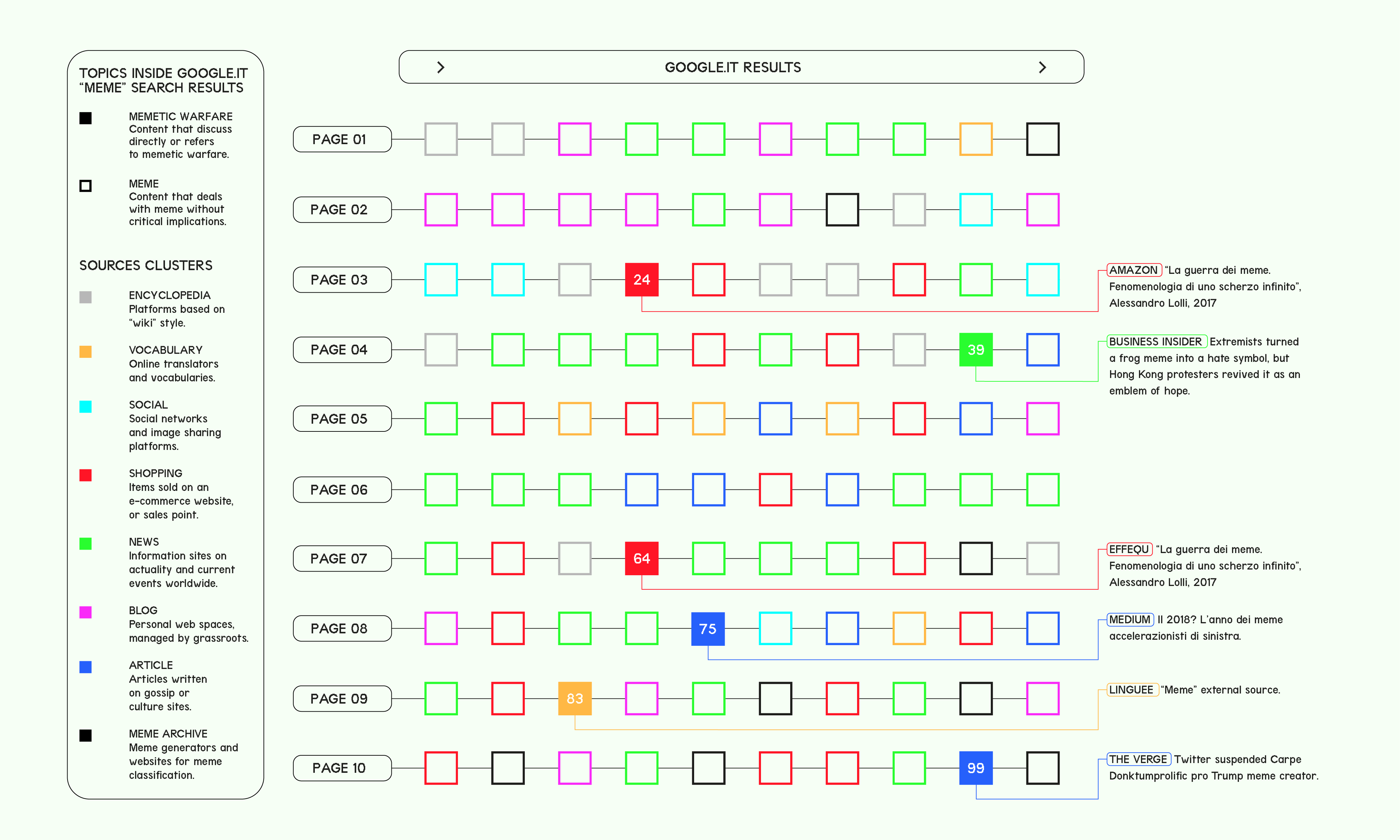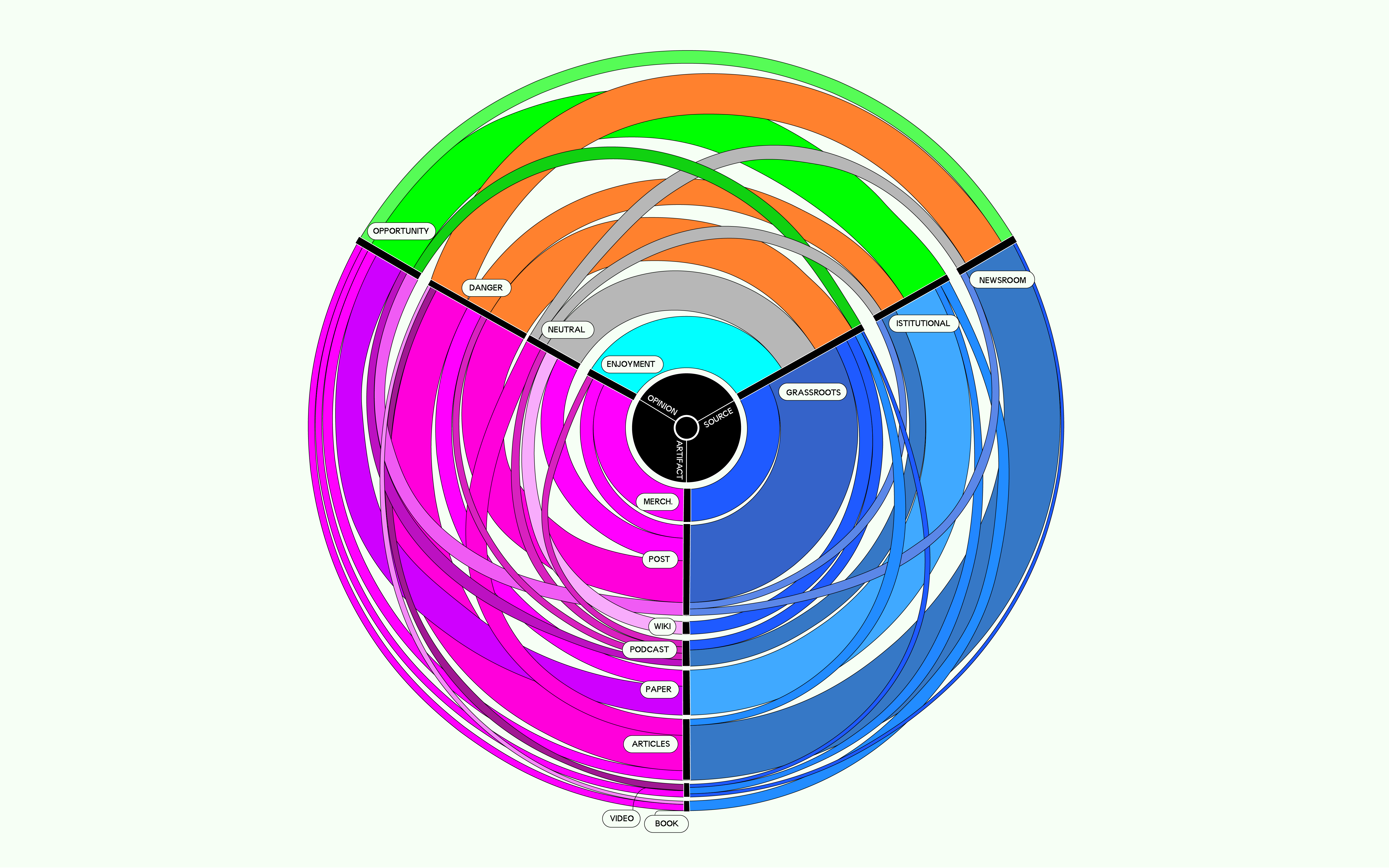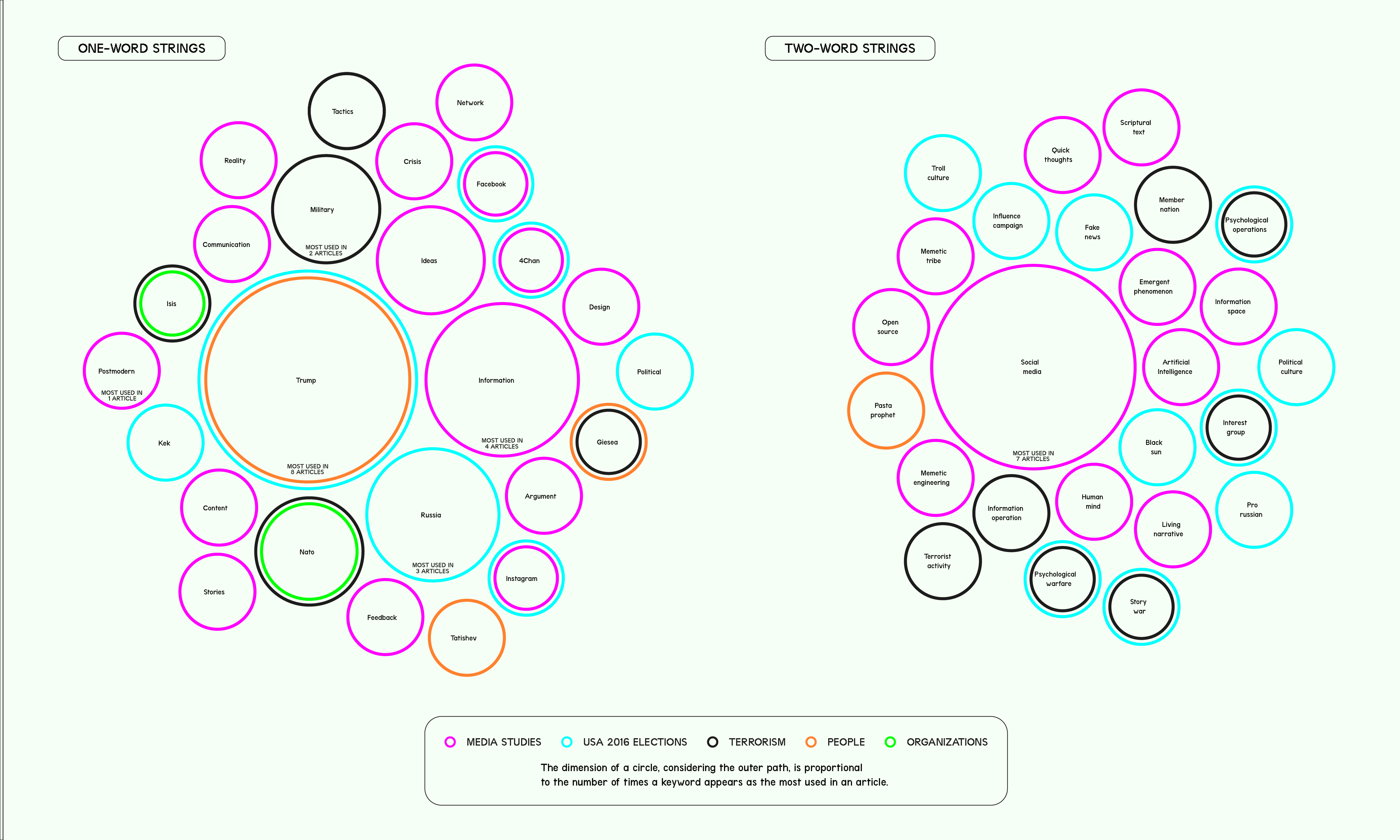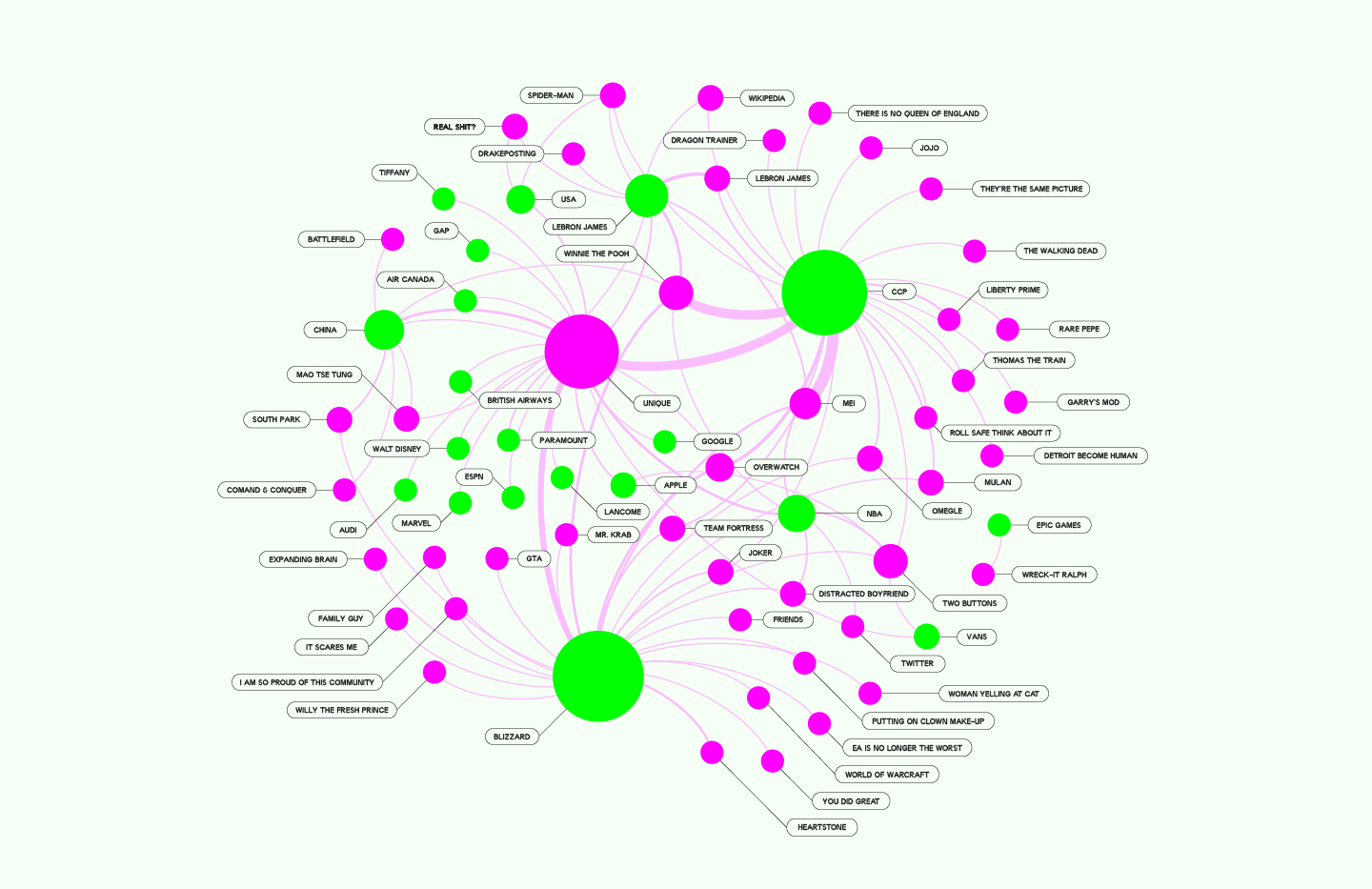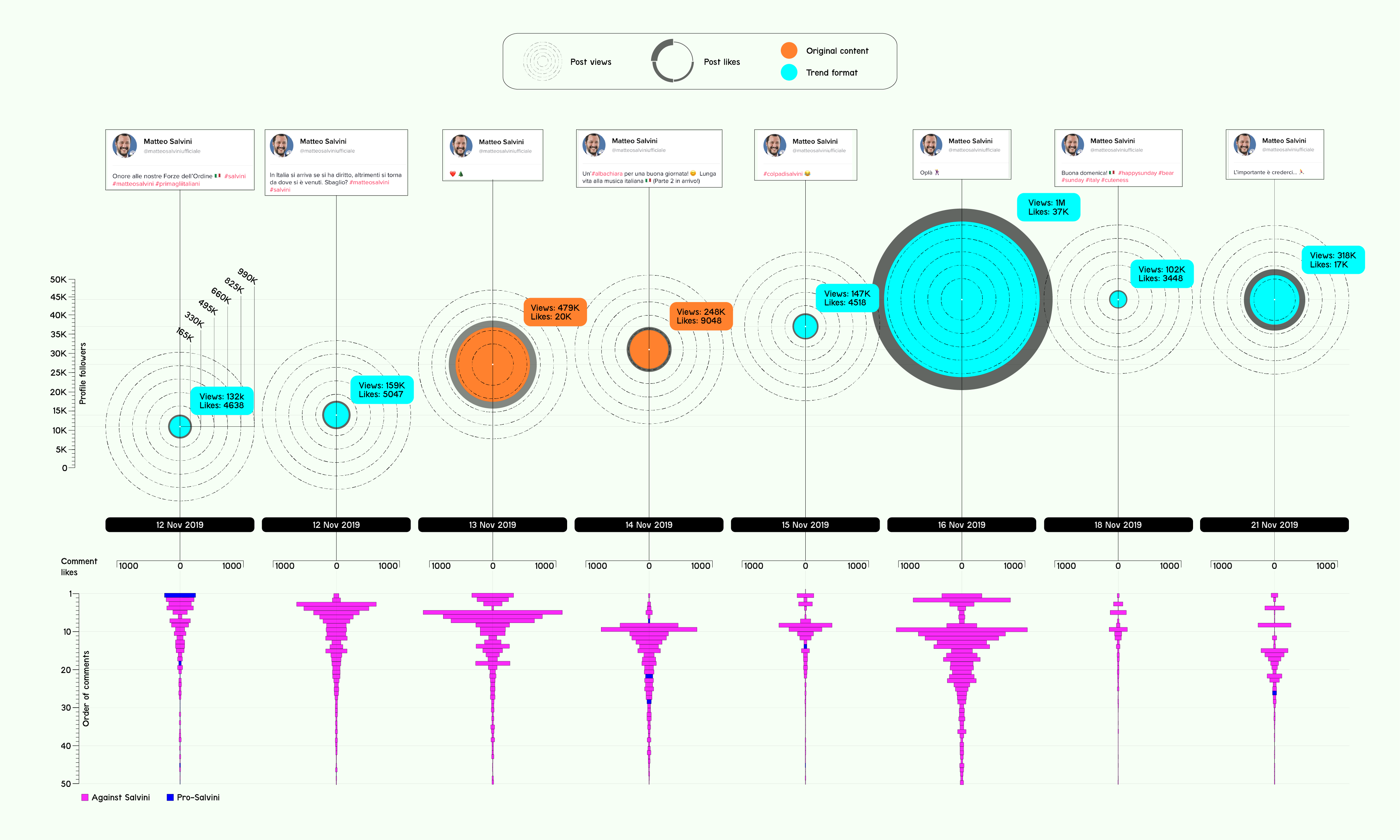Memetic warfare can be defined as the strategic weaponization of memes, to
use these artefacts as Improvised Explosive Device of information warfare. A meme, to mention Richard Dawkins, is a unit of cultural information spread by imitation. Spreadability, open-source materials, and environmental conditions provided by social networks enable almost everyone to create and spread these contents.
The term meme derives from the Greek mimema, which means “imitated”. This definition gives us the chance to re-evaluate the traditional concept of iconography. During the Renaissance, the symbolical power of images was a convention shaped by theologists and sovereigns and was framed into a rigid and hierarchical structure.
By contrast, nowadays the meaning of images and symbols is fluid, as the Internet broken topographic barriers and, apparently, created a decentralized ecosystem. Despite this, it is evident that context and shared conventions are still essential in order to evaluate the relevance of a meme into the information battlefield.
In this web report, we aim to describe the spread dynamics of memetic contents and their potential weaponization as a form of propaganda. We started checking the general awareness and the main sources of information available on Google, finding out that without being aware of memetic warfare, it’s difficult to come across the topic. Furthermore, the opinion of different typologies of content creators on the web it’s miscellaneous.
To see how memes can be turned into smart containers for viral ideas, we mapped their publication in specific channels like Reddit, Telegram and TikTok. Observing the different forms of contents we identified the protagonists of the online debate, the reasons for the choice of some formats to raise the awareness of a cause and the reaction of the active audience. In conclusion, our research shows that memetic warfare is no more a hypothetical practice as it has been implemented both by grassroots movements and political parties as part of complex and decentralized communication strategies.
